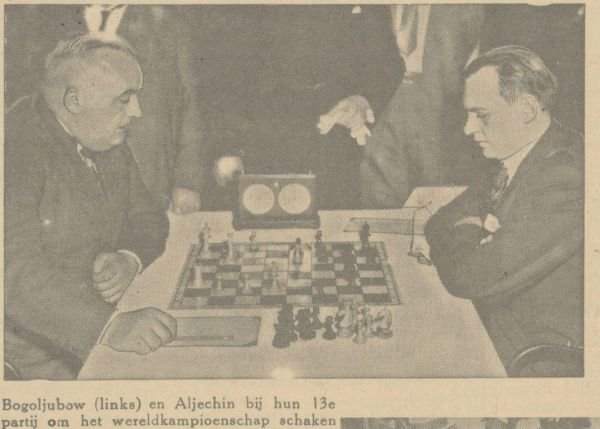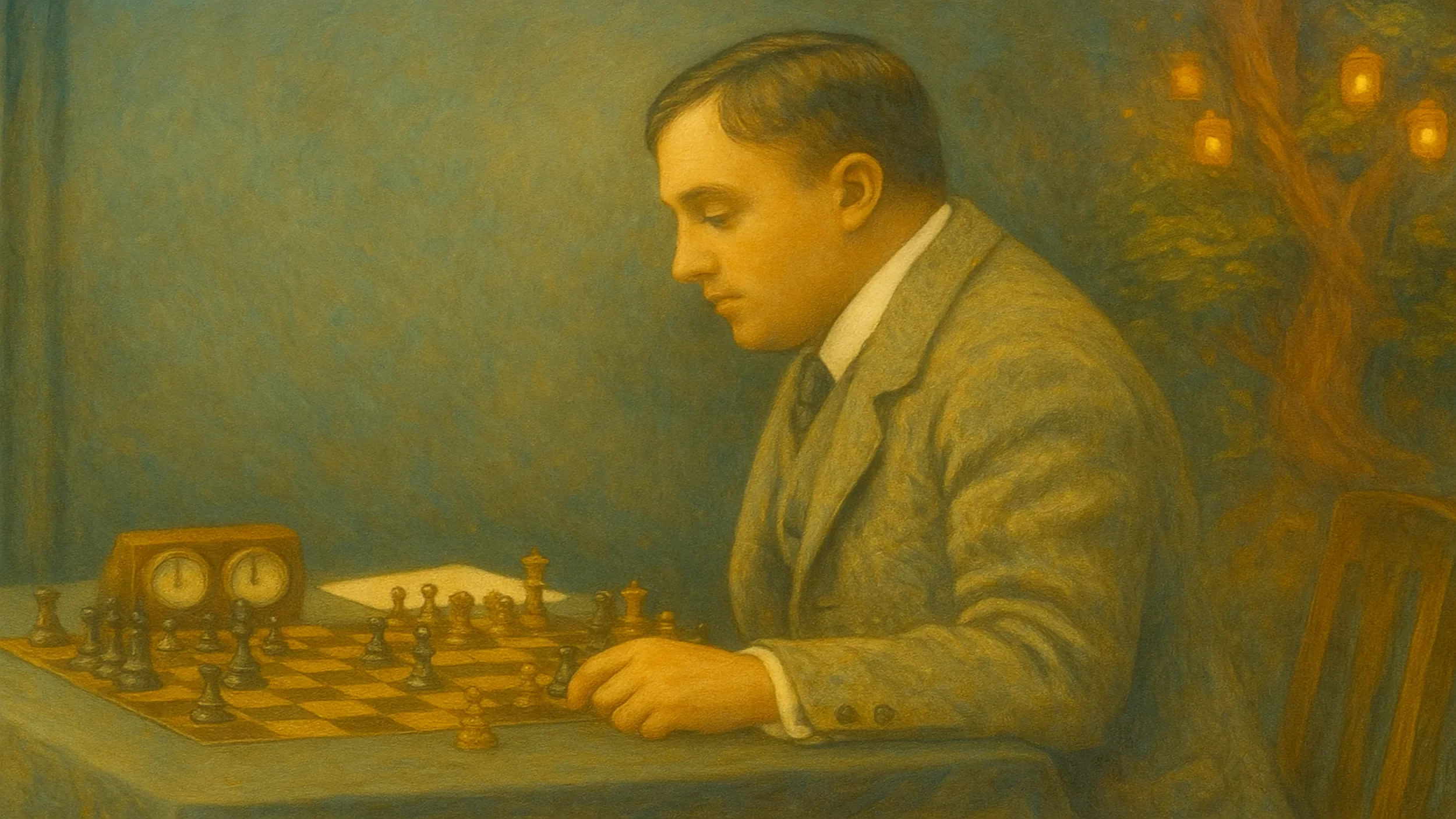Efim Bogoljubow: Tournaments, Internment and Blindfold Battles
Efim Bogoljubov was one of the early 20th century’s most imaginative chess players. Born in 1889 in what is now Ukraine, he matured into a grandmaster who represented first the Russian Empire/Soviet Union and later Germany. Many fans remember him for his creative attacking style and a sense of humour that produced the quote: “When I play White, I win because I am White. When I play Black, I win because I am Bogoljubov.”
A Fateful Tournament in Germany
Bogoljubov’s life changed dramatically at the 19th German Chess Federation congress in Mannheim in July–August 1914. During the event, World War I broke out, and the German authorities arrested the eleven Russian participants, including Bogoljubov and Alexander Alekhine. After short internments in Mannheim, Ludwigshafen, and Rastatt, Bogoljubov was moved to the Black‑Forest village of Triberg. The conditions were relatively mild—he and the other Russian masters were allowed to play tournaments and even met local residents. It was in Triberg that he met Frieda Kaltenbach, a schoolteacher’s daughter; they married in 1920 and later had two daughters.
After the war, Bogoljubov decided to remain in Germany. He quickly became a dominant force on the tournament circuit. In 1922, he won the international tournament at Bad Pistyan, finishing first with 15 points out of 18, half a point ahead of Alekhine and Rudolf Spielmann. Two years later, he returned to Russia to compete in the Soviet Championship, winning in both 1924 and 1925, and capturing the prestigious Moscow International Tournament ahead of former world champions Emanuel Lasker and José Raúl Capablanca. That same year, he won the German championship (Deutsche Meisterschaft (24. DSB‑Kongress, Meisterturnier) in Breslau, making him the only player ever to hold the Soviet and German championships in the same year. These successes secured his reputation as Germany’s top player and opened doors for future world‑championship matches.
Life in Captivity and Blindfold Games
The tribulations of internment did not dull Bogoljubov’s enthusiasm. He spent hours playing blindfold chess with Alekhine during their incarceration. These games sharpened both players’ tactical vision and forged a friendly rivalry. After his release, Bogoljubov embarked on a series of victories in Germany and Sweden, beating the positional genius Aron Nimzowitsch and drawing with his former jail‑mate Alekhine.
Bogoljubov’s blindfold sessions with Alekhine returned to the spotlight during the 1920s. In 1928, he issued a challenge to Alekhine; he became a German citizen on 2 November 1929. The two had “played countless blindfold games during their internment after Mannheim 1914”, and their rivalry culminated in two world‑championship matches. The first, held in Germany and the Netherlands in 1929, saw Alekhine prevail; the rematch in 1934, contested across twelve German cities, had the same result. While Bogoljubov never won the title, the matches are remembered for their fighting spirit and spectacular combinations.
Legacy and later years
Despite political upheaval, Bogoljubov remained a prolific player and trainer. He won numerous German tournaments throughout the 1930s, represented Germany at the 1931 Chess Olympiad, and later coached the national team. During the Nazi era, he faced discrimination because he was not considered “Aryan,” yet he continued to mentor rising talents and contribute to chess literature. After World War II, he was sidelined by Soviet officials and was not awarded the grandmaster title until 1951. He died in Triberg in 1952, leaving behind a body of creative games and a distinctive contribution to opening theory, most famously the Bogoljubov Defence (Bogo-Indian).
He also contributed to chess literature, editing Klassische Schachpartien aus modernen Zeiten. I. Teil: 1919–1920 (Veits kleine Schachbücherei, Band 6; Berlin und Leipzig: Walter de Gruyter & Co., 1926), a compact selection “mit einem Bildnis und 42 Diagrammen.”
(German‑language editions use the spelling Bogoljubow.)
Between internment and his title matches, Bogoljubov also wrote. This slim 1926 de Gruyter volume—Klassische Schachpartien aus modernen Zeiten—documents his editorial voice and how German readers met “Bogoljubow” in print.
Takeaways for Modern Readers
Resilience under pressure. Bogoljubov turned a wartime internment into an opportunity to improve through blindfold play and analysis.
Seize opportunities. Winning major tournaments in both the Soviet Union and Germany in the same year shows how taking chances in different venues can advance a career.
Friendship and rivalry. His relationship with Alekhine, shaped by shared hardship and competition, demonstrates how rivals can push each other to greater heights.
Bogoljubov’s journey from interned player to world‑championship challenger captures the drama and resilience of early 20th‑century chess. His games remain enjoyable studies for anyone who loves dynamic, imaginative play, and his life story adds depth to the rich tapestry of Soviet and German chess history.





